Stone masonry is one of the oldest craftings of buildings like ancient monuments, artifacts, cathedrals and nowadays in landscaping works, outside walls, and sculptures use stone from the earth to give a more beautiful structural look.
There are two main types of stone masonry-
Rubble Masonry
In this type of masonry irregular shapes and sizes of stones are used. They may be hammered to remove sharp edges, and various types are present.
Dry rubble masonry:
In this type, walls are built in courses, but without mortar and this type of masonry is extensively used for the construction of compound walls. It is the cheapest type of construction, but it needs skilled masons for its process.
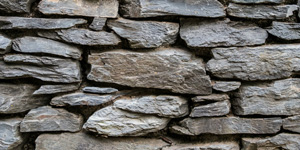
Random rubble masonry:
In this type, quarry-dressed stones of various shapes and sizes are used, and it may be coursed or uncoursed rubble masonry.
Coursed rubble masonry: In this, the wall is built in courses varying from 300- 450 mm and all the courses need not be of the same height.
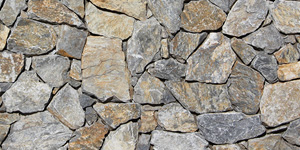
Uncoursed rubble masonry: It is the cheapest stone masonry of all the types.
Square rubble masonry:
It may be coursed or uncoursed, and the courses may be of equal or unequal heights. In this type, stones have straight bed and sides and are given straight cut finishes or faces are hammer-dressed.

Polygonal walling:
In this case, hammer-finished stones are arranged to give polygonal shapes on the face, and these types of works can be carried out by skilled masons only.
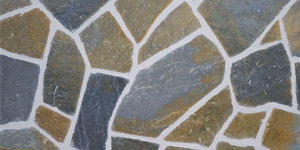
Flint walling:
In this type of construction, the masonry may be coursed or uncoursed. In flint walling, flints of varying thickness from 50-75 mm, length 150-300 mm are preferred, and stones are extremely hard but brittle. The strength of the wall may be increased by providing tacking courses of tiles or bricks.
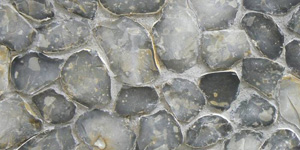
Ashlar Masonry
Ashlar masonry consists of prepared stonework, i.e. stones are cut neatly in either square or rectangular shape of height 250-300 mm. All the stones in a course have the same height and length of the stone should not be more than three times the height, and it should not be less than half the height. There are different types in ashlar masonry, and they are
Ashlar fine tooled:
In this type, blocks are chisel dressed on all the faces, and they are built in regular courses of not less than 300 mm and the mortar joints should not exceed 3 mm. This is the finest of stone masonry and also the costliest of all.
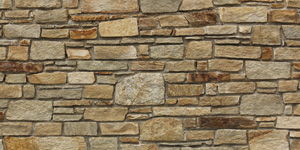
Ashlar rough tooled:
In this type, the bed and sides are finely chiseled but only on the facing sides, and the inside facing remains roughly dressed. The thickness of mortar joints may be of 6 mm.
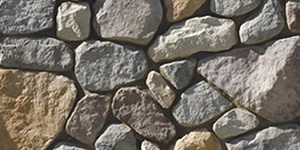
Ashlar chamfered:
In this type, the interior remains quarry finished only and in facing the strip around the periphery is chamfered at an angle of 45 degrees. Then another strip of 12 mm width is provided and if the projections are more than 80 mm, they are removed by hammering.
Ashlar rock or quarry-faced:
In this case, blocks have straight bases and edges, on the facing side a strip of 25 mm is chisel finished along the perimeter. The interior remains quarry finished only, and the thickness of the mortar joints may be of 10 mm.
Ashlar facing:
In this type, the main wall is made of brick or rubble masonry or from concrete. The joints of the stones are dressed perfectly and facing blocks are not less than 200 mm in height, the width is 1.5 times the height.
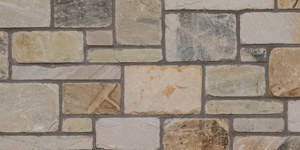
Ashlar block in course:
This type of masonry is in between rubble and ashlar masonry. The faces are hammer-dressed only, and the vertical joints are not as straight and fine has in ashlar masonry. This type of masonry is adopted in heavy works like retaining walls, piers of bridges, etc.
Know about the Types of Brick Masonry in Construction


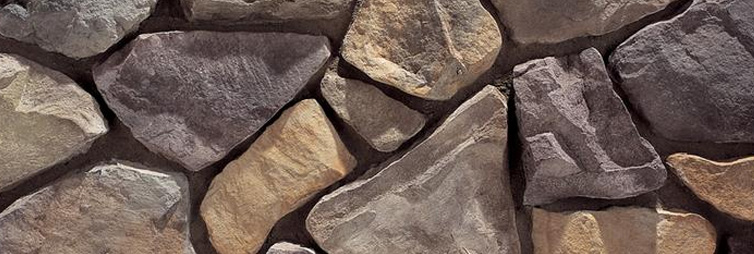



















Ishwaranand
posted on May 9, 2020 11:20:13 AM